-
Types of context and their
role in realization of meaning. -
Meaning and use.
6.1.
One of the approaches to the investigating word-meaning is through
the study of syntagmatic
relations
of words, combinations with other words in speech, i.e. in typical
contexts.
“The
Oxford Companion to the English Language” defines context
as (1)
the speech… that normally precedes and follows a word or other
element of language, (2)
the linguistic, situational, social and cultural environment of an
element of language.
We shouldn’t assume that
words acquire meanings only in context as the meaning of the word is
its inherent property. But a particular meaning is realized in a
certain context.
Word-meaning
is determined by different types of contex. Firstly, we distinguish
between linguistic,
or verbal
contex
and extralinguistic,
or non-verbal
contex.
Linguistic
context
is the minimum stretch of speech necessary to determine (realize)
each individual meaning. The semantic structure of a word has an
objective existence. Context brings out, actualizes meanings and it
is in this sense that we say that word meaning is determined by
context.
Technically, the occurrence of
a word in a linguistic context is said to be determined by
collocational or selectional restrictions,
e.g. the
use of flock
with sheep
and birds,
pack
with dogs,
wolves
and cards.
Generally such association is
largely determined by meaning
e.g. drink
beer/milk,
but eat
bread/meat,
but also, by the conventions
of use,
e.g. milk
is never rancid,
but sour.
On the other hand, meaning is
determined by context,
e.g. white
people, white
wine, white
coffee (which is of course brown).
A certain meaning in the
semantic structure of a word which is least dependent on context and
is representative of a word in isolation, i.e. occurs to us when we
hear or see the word alone, is called free,
e.g. doctor
“smb
whose profession is to attend to and treat sick people”.
The other
meanings that the word realizes only in certain contexts are bound,
e.g. a
radio/bicycle doctor
“(infml)
a person whose job is to repair the stated thing”.
There are
two types of linguistic context: lexical
context
(collocation)
and grammatical
context
(colligation).
Lexical
context
is a habitual association of a word with other words in speech, the
co-occurrence range of the word, i.e. the group of other lexical
items combined with a given word.
e.g. raise
when combined with cattle
or pigs
means ”keep animals”, when combined with hopes
and awareness
means “cause to appear or exist”, when combined with question
or issue
means “mention”.
In
grammatical
context
it is the grammatical structure, morpho-syntactic combinability of
the word that brings out individual meanings. In modern linguistics,
the term pattern
is used to denote grammatical context. Patterns are represented in
conventional symbols, e.g. N — nouns, V — verbs, D — adverbs, etc.
e.g. make:
V+N “to produce” (to make smth);
VNV “to force” (to make
smb do smth);
VAN “to become” (to make a
good teacher).
However, we often find that
both lexical and grammatical context should be considered together as
grammatical context alone is insufficient to indicate in which
meaning the word is used,
e.g. (1)
take
in the VN pattern is used in different meanings determined by the
lexical context:
take
coffee/tea/sugar
—
“eat or drink”,
take the
bus/train,
etc. — “travel by”;
(2) in the
pattern V prp N take
has again quite different meanings:
take to
gardening
“adopt as a practice or hobby”,
take to
the woods
“take refuge in”.
It is argued that difference
in the distribution of the word indicates the difference in meaning.
But the sameness of the distribution does not imply the same meaning:
in the same pattern a word may be used in different meanings which
are brought out by the lexical context.
Non-linguistic
context
is often referred to as situation,
i.e. the actual speech situation in which the word is used. Here the
contextual factors are: (1)
the speaker and the listener, i.e. their age, sex, background, social
class, occupation, social relations, physical and emotional state,
(2)
the setting, i.e. the circumstances, e.g. the place and time of
communication, for example, a law court or a press conference.
e.g. If “We are going down”,
perhaps in a storm, is said on board a ship it means “The ship is
sinking”, if it is said on campus, say, at the end of June, it
means “We are leaving the university, having graduated”.
Language
should be considered in a
broad context of culture, way of life,
the very environment in which it exists. Words should be studied in a
broad context of attitudes and perceptions as part of people’s life
experience. The extralinguistic knowledge about how things are
organized and perceived (the
context of reference)
then becomes indispensable.
Purely linguistic and
extralinguistic features are closely interwoven. Historical and
cultural information is actually realized in words.
6.2.
It is important to distinguish between systemic
or «standard»
meanings
that the word has in the lexicon, on the one hand, and «contextual»
meanings,
or uses
of the word in different contexts. Thus «permanent»
(common) «stock»/»usual» meanings which are fixed
in dictionaries are opposed to «functional»/»situational/occasional»
meanings, which are not registered in dictionaries. They are also
called «extended», «creative», unique to each
specific instance, while «dictionary» meanings are
«conventionalized» and are realized in typical context.
Thus, we can describe the
above opposition in the following terms:
-
Static
meaningsDynamic
meanings (= uses)Found
in dictionariesFound
in speechRealized
in contextDeriving
from contextBase-meaning
Extended
meaningPredictable
Unpredictable
Common/generalized
Unique/personal
e.g. The
noun snout
means «the front part of an animal’s head, esp. a pig’s head».
It can also be used contemptuously of a human nose when it is large
or badly shaped. These are systemic «dictionary» meanings,
belonging to the conventional vocabulary. But in «the
snout of the lorry»
(Gerald Durrell) snout
refers to «the pointed part of something, thought to be like a
snout». This is an occasional use of the word which extends its
semantic potential.
Thus, words used in various
contexts may acquire additional meanings. In most cases «extended»
meanings are dynamic, i.e. «creative» uses, expressing the
speaker’s individual views and attitudes. Usually such uses are
emotional-expressive (metaphoric),
e.g. «the
blanket
of the dark» (Shakespeare).
«Occasional
meanings» (uses) may eventually become conventional meanings,
for example, now blanket
has the fixed meaning «a thick covering», in which it was
originally used by Shakespeare in «Macbeth».
Any text includes both types
of semantic realization of words. On the one hand, there are always
words used in their conventional meanings; on the other hand, there
are «dynamic», occasional uses.
The actual meanings of words
in context are affected by the genre of the utterance, the type of
discourse and the functional style in which the given lexical item
occurs. The number of «extended», occasional uses is
greatest in imaginative genres — in fiction and journalism, as
compared to informative ones. There seems to be no limit to how
widely the word can vary in its «creative», extended uses.
Such uses contribute to the development of the word’s semantic
structure.
Соседние файлы в предмете [НЕСОРТИРОВАННОЕ]
- #
- #
- #
- #
- #
- #
- #
- #
- #
- #
- #
- Размер: 250 Кб
- Количество слайдов: 17
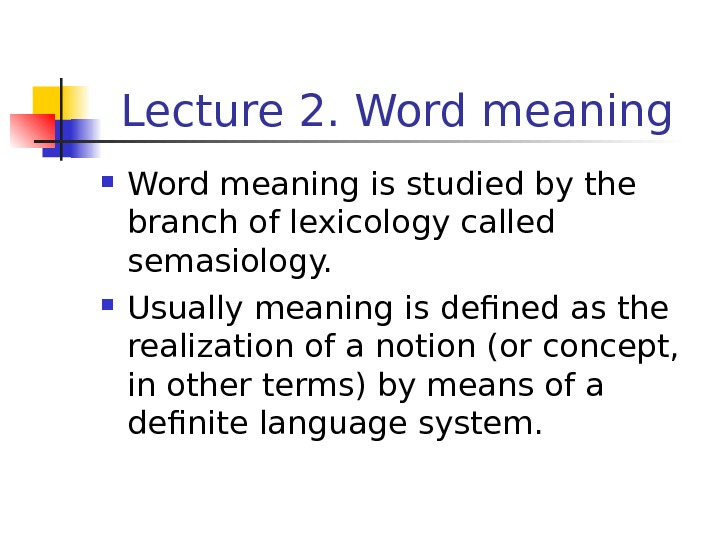

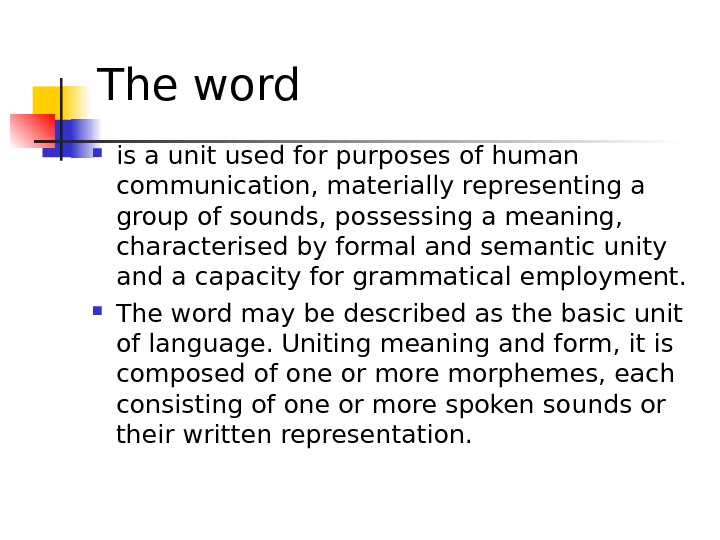
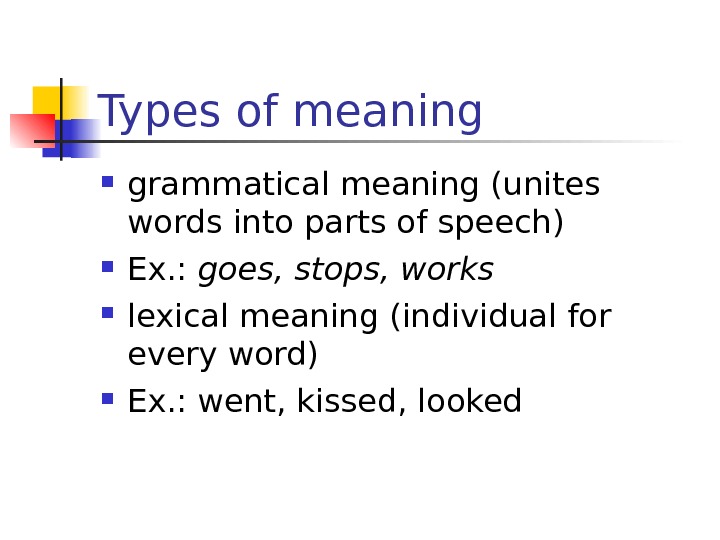
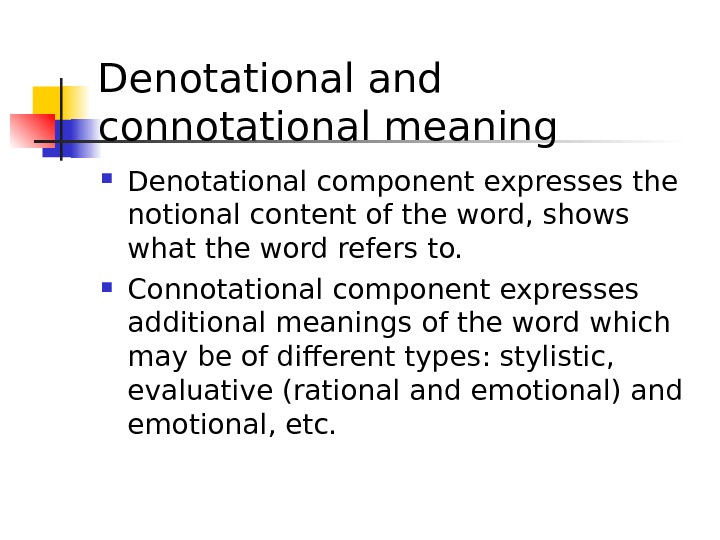




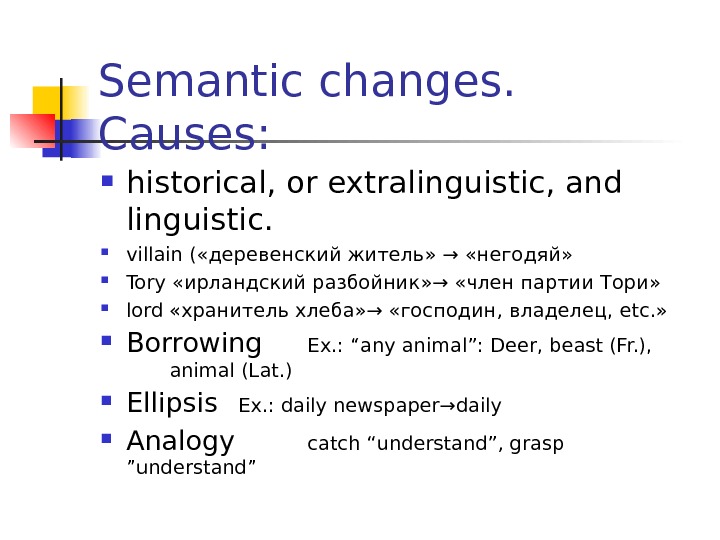
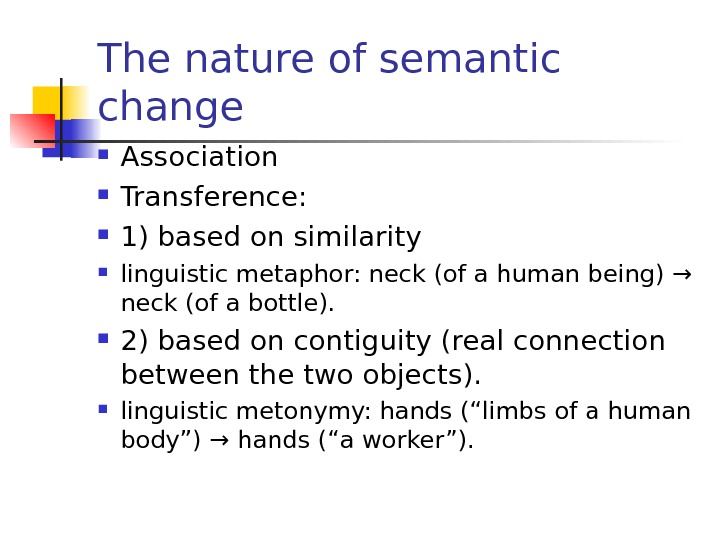
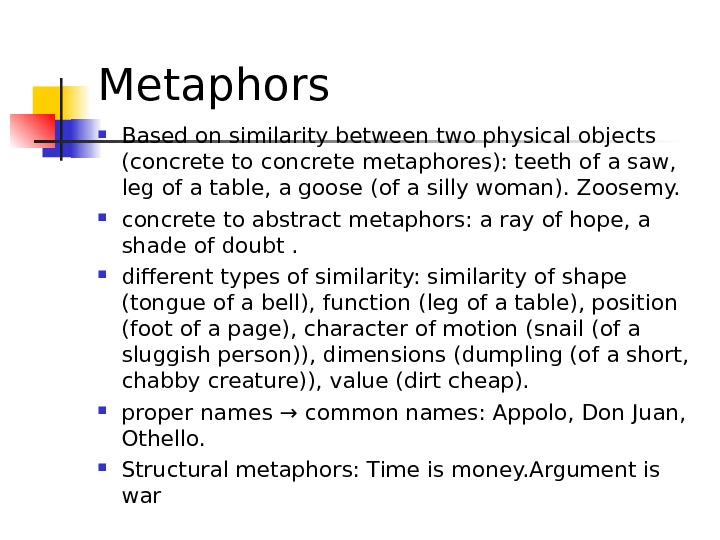



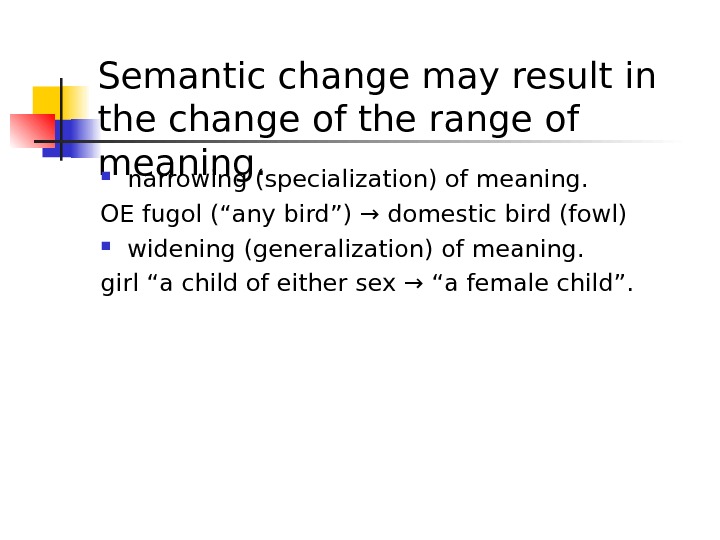

Updated on October 02, 2018
Each word in English belongs to one of the eight parts of speech. Each word is also either a content word or a function word. Let’s think about what these two types mean:
Content Words vs. Function Words
- Content = information, meaning
- Function = necessary words for grammar
In other words, content words give us the most important information while function words are used to stitch those words together.
Content Word Types
Content words are usually nouns, verbs, adjectives, and adverbs. A noun tells us which object, a verb tells us about the action happening, or the state. Adjectives give us details about objects and people and adverbs tell us how, when or where something is done. Nouns, verbs, adjectives and adverbs give us important information required for understanding.
- Noun = person, place or thing
- Verb = action, state
- Adjective = describes an object, person, place or thing
- Adverb = tells us how, where or when something happens
Examples:
| Nouns | Verbs |
|---|---|
| house | enjoy |
| computer | purchase |
| student | visit |
| lake | understand |
| Peter | believe |
| science | look forward to |
| Adjectives | Adverbs |
|---|---|
| heavy | slowly |
| difficult | carefully |
| careful | sometimes |
| expensive | thoughtfully |
| soft | often |
| fast | suddenly |
Other Content Words
While nouns, verbs, adjectives and adverbs are the most important content words, there are a few other words that are also key to understanding. These include negatives like no, not and never; demonstrative pronouns including this, that, these and those; and question words like what, where, when, how and why.
Function Word Types
Function words help us connect important information. Function words are important for understanding, but they add little meaning beyond defining the relationship between two words. Function words include auxiliary verbs, prepositions, articles, conjunctions, and pronouns. Auxiliary verbs are used to establish the tense, prepositions show relationships in time and space, articles show us something that is specific or one of many, and pronouns refer to other nouns.
- Auxiliary verbs = do, be, have (help with conjugation of tense)
- Prepositions = show relationships in time and space
- Articles = used to indicate specific or non-specific nouns
- Conjunctions = words that connect
- Pronouns = refer to other nouns
Examples:
| Auxiliary Verbs | Prepositions |
|---|---|
| do | in |
| has |
at |
| will | though |
| is | over |
| has been | between |
| did | under |
| Articles | Conjunctions | Pronouns |
|---|---|---|
| a | and | I |
| an | but | you |
| the | for | him |
| so | us | |
| since | ours | |
| as | she |
Knowing the difference between content and functions words is important because content words are stressed in conversation in English. Function words are non-stressed. In other words, function words are not emphasized in speech, while content words are highlighted. Knowing the difference between content and function words can help you in understanding, and, most importantly, in pronunciation skills.
Exercise
Decide which words are function and content words in the following sentences.
- Mary has lived in England for ten years.
- He’s going to fly to Chicago next week.
- I don’t understand this chapter of the book.
- The children will be swimming in the ocean this time next week.
- John had eaten lunch before his colleague arrived.
- The best time to study is early in the morning or late in the evening.
- The trees along the river are beginning to blossom.
- Our friends called us yesterday and asked if we’d like to visit them next month.
- You’ll be happy to know that she’s decided to take the position.
- I won’t give away your secret.
Check your answers below:
Exercise Answers
Content words are in bold.
- Mary has lived in England for ten years.
- He’s going to fly to Chicago next week.
- I don’t understand this chapter of the book.
- The children will be swimming in the ocean at five o’clock.
- John had eaten lunch before his colleague arrived.
- The best time to study is early in the morning or late in the evening.
- The trees along the river are beginning to blossom.
- Our friends called us yesterday and asked if we’d like to visit them next month.
- You’ll be happy to know that she’s decided to take the position.
- I won’t give away your secret.

